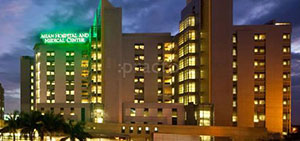I had Robotic Surgery Philippines: Susan Fetalvo

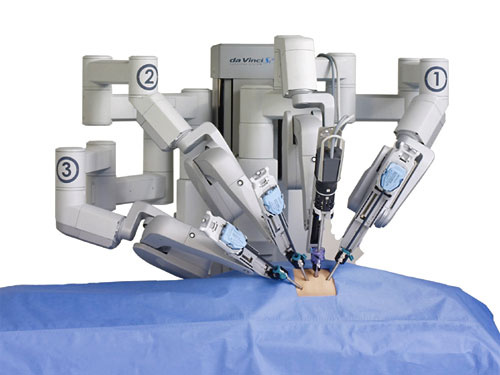
This is the Davinci Robot that is used in Robotic Surgery Philippines by Dra. Rebecca Singson.
Dr. Rebecca Singson has been my OB since 2009. What I like about her is that she has been jolly and very positive not only regarding health but also to life. When you enter her clinic which is decorated with Italian inspired paintings and surrounded by mirrors, you can never feel that you are in a hospital setting. Her nurses, Maika and Claresse are very approachable and they always remind me of my appointments with Dr. Singson. It was my regular checkup last February for my ultrasound result under Dr. Comia. The results showed an endometriotic cyst on my right ovary and adenomyosis. Dr. Singson discussed with me the causes and possible Robotic Surgery Philippines treatments of my condition. She explained to me the differences between laparoscopic surgery and robotic surgery. Because of my complicated condition, 2 previous surgeries with expected adhesions, Dr. Singson explained to me that Robotic Surgery Philippines was best for me. I was scheduled for Robotic Surgery Assisted Hysterectomy with Right Salpingooophorectomy last May 10, 2016. I was worried at first because it was my first time to undergo such procedure. From time to time, I would call her nurses to ask questions for Dr. Singson and she would always answer and reassure me that everything will go well.
I was admitted early morning last May 10, 2016 for my robotic surgery. Whether I was in pre-op and post-op, the duty nurses or anyone who heard that I was under the care of Dr. Singson just kept telling me over and over that I was in good hands. The Robotic Surgery Philippines lasted for just almost an hour and I was transferred to my room 2 hours after my surgery. The day after, I was already pacing around my room and Dr. Singson was even amazed when she did her rounds. I stayed in the hospital just for two days and was finally discharged early morning of May 13, 2016. I didn’t feel any severe pain (maybe a pain scale of 1-2 over 10) and was back to normal around 3 days after my surgery. I only had 4 small incisions in my tummy which did not interfere with my daily activities. She is the best doctor for me and I highly recommend her to everyone who is in need of medical treatment related to reproductive health. So, if I ever have any other medical problems, I will definitely come back to her. This is not just my testimony to her; not only about her knowledge and skills, but also about the way the nurses and other staff talked about her, about who she is as a person. She is compassionate and caring and it’s the full package you desire when you’re looking for a great physician.
Dr. Rebecca Singson gives talk on Robotic Surgery in the Philippines at Quirino Memorial Hospital
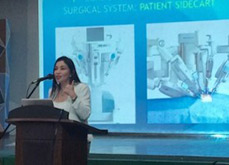
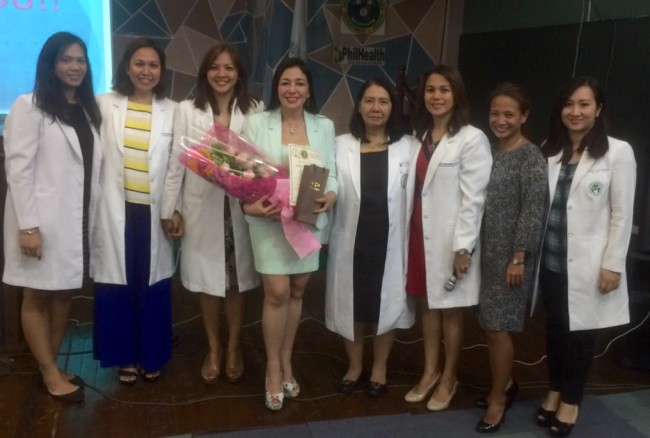
Dr Rebecca Singson was invited to be the speaker at the Institutional Conference at the Main Auditorium of the Quirino Memorial Hospital on March 31, 2016. She spoke on the topic, “Robotic Surgery Philippines: Are we Ready?” before an audience of about 100 interns, clerks , residents and consultants from various medical specialties .
She gave an introduction to how robotic surgery works, it’s applications , and the current trend in utilization abroad .
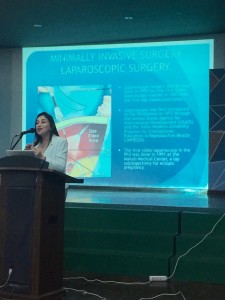 Robotic Prostatectomy is now considered the gold standard in Radical Prostatectomy (surgical removal of prostate cancer) and nearly 80% of hysterectomy (removal led the uterus) done for Gynecologic cancers are done robotically in the United States. There is also a growing utilization for hysterectomies for benign conditions such as myomas , ovarian cysts as well as for repositioning/repair of the vagina which has prolapsed after removal of the uterus (sacrocolpopexy).
Robotic Prostatectomy is now considered the gold standard in Radical Prostatectomy (surgical removal of prostate cancer) and nearly 80% of hysterectomy (removal led the uterus) done for Gynecologic cancers are done robotically in the United States. There is also a growing utilization for hysterectomies for benign conditions such as myomas , ovarian cysts as well as for repositioning/repair of the vagina which has prolapsed after removal of the uterus (sacrocolpopexy).
The prerequisites and costs of setting up a Robotic Surgery Program were discussed. And while that remains a dream for many government institutions in the country, they can at least start with the more feasible laparoscopic surgery set up , then level up to Robotic Surgery when the Minimally Invasive Program is actively vibrant .
Overall, the Da Vinci Robot has proven to be an enabling tool to facilitate complex surgeries without reverting to large incisions . In the future , just like the computer and the cellphone , newer, cheaper and less bulky models will become available in the market , which will revolutionize the way we perform surgery and make open surgery, possible just a historical fact .
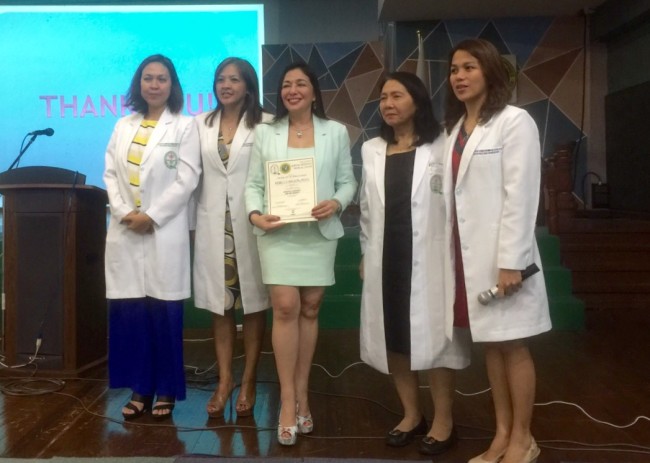
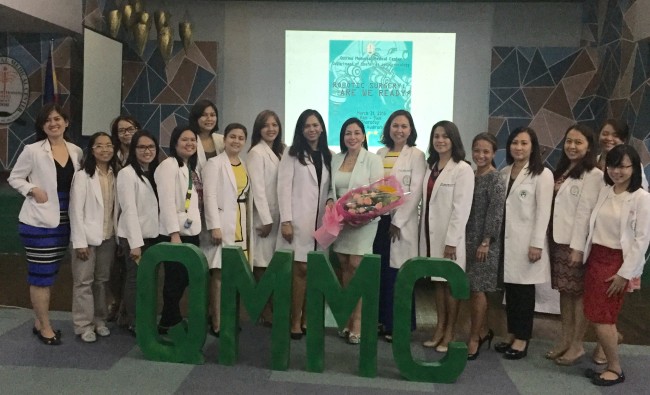
Evangeline Tablizo – Robotic Surgery Philippines

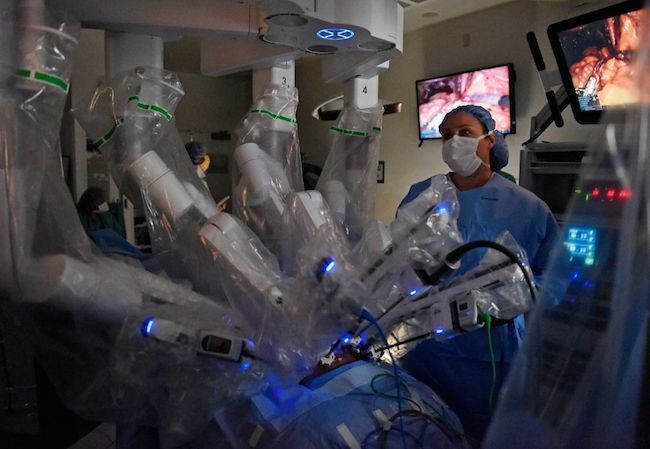
A typical setup of the Davinci Robot for Robotic Surgery in the Philippines
I am EVANGELINE B. TABLIZO, 67 years old and was diagnosed with Endometriod Adenocarcinoma Grade II last May 4, 2015. I had Robotic Surgery Philippines.
Last June 2, 2015 I had a Robotic Surgery Philippines Hysterectomy, Bilateral Solpingooophorectomy with Bilateral Lymph Node Dissection performed by Dra. Rebecca B. Singson at the St. Luke’s Global City. The operation started at 5:25 p.m. and was done by 9:20 p.m. or a total operation time of 3 hours 55 minutes.
From the recovery room I was brought up to my room at no. 812 at around 2:00 a.m. of June 3, 2015. I was already awake and the first person I saw was my daughter Johanna and so I greeted her “good morning”. God is so good because I was not in pain and I felt good although there was a little discomfort due to my catheter from the robotic surgery. At 9:00 a.m. the catheter was finally removed and I felt so relieved. I then started to walk around my room. At 5:00 p.m. Dr. Singson visited me and when she saw me walking already she told me that I could go home but I insisted that I wanted to rest for another night. I was discharged the next day, June 4, at 12:00 noon.
When I left St. Luke’s last June 4, I did not have any post operative Robotic Surgery Philippines pain. Another advantage of robotic surgery was the lower risk of wound complication since it dried up easily after one week. After only a week from my surgery I was able to do some of my regular activities such as going to church, the mall and lunch- out with my family and friends.
Ovarian Tissue Preservation
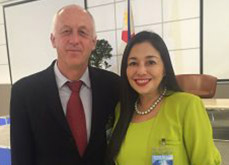
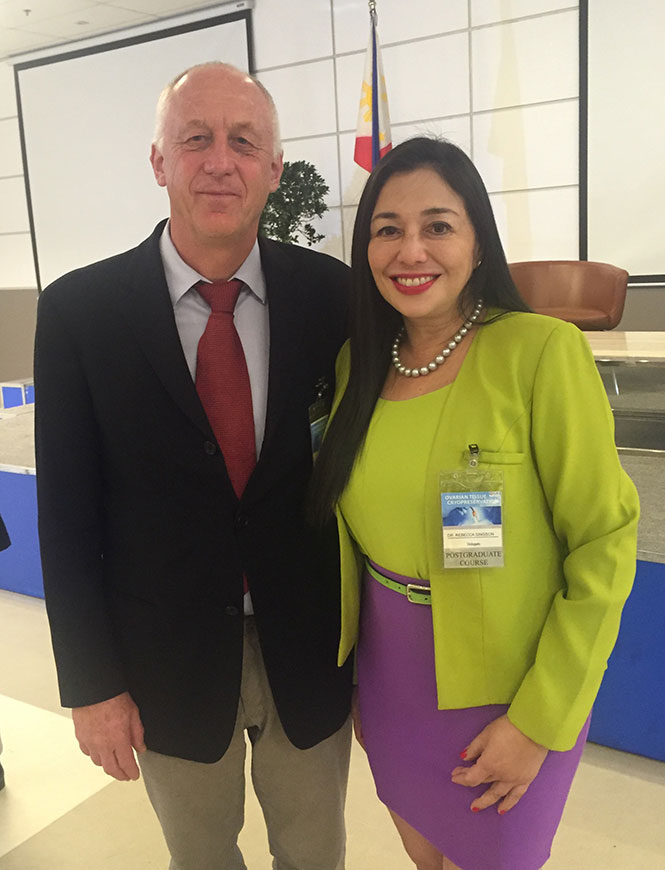 There’s hope for young cancer patients who need to undergo chemo or radiotherapy to have children in the future. The technology of freezing your ovaries (this is different from freezing your eggs which we have been doing since last year) now exists in the Phil.
There’s hope for young cancer patients who need to undergo chemo or radiotherapy to have children in the future. The technology of freezing your ovaries (this is different from freezing your eggs which we have been doing since last year) now exists in the Phil.
With me in the photo is Prof. Claus Yding Andersen from the Univ of Copenhagen, Denmark, one of the gods in the field of Reproductive Medicine, the subspecialty in gynecology that deals with helping infertile and subfertile women have children. He is here in Manila to lecture in our Postgraduate Course in St Lukes BGC on “Ovarian Tissue Cryopreservation”.
If you were young and needed to undergo chemotherapy for whatever cancer, you would risk losing your ovarian function and jeopardize future fertility . With modern technology in St Lukes BGC, prior to your chemo, you can remove some ovarian tissue, cryopreserve it and have it re-implanted once declared disease-free.
The possibilities are endless. If you were undergoing removal of an ovarian cyst while you are young and still fertile, you could request for removal of a sliver of normal ovarian tissue, for cryopreservation (as a back-up insurance) and opt for re-implantation should you, for some misfortune, end up with some cancer in the future.
The applications don’t need to be morbid. Aging women who prioritize their career over having babies can also preserve their eggs or their ovaries for future fertility. Alternatively, once in menopause you may also re-implant this normal tissue on your atrophic ovaries or even just on your skin to reverse menopause!! Inch by inch, man is moving one step closer to immortality!
Using Robots For Surgery… Da Vinci – The World’s Most Advanced Surgical Robot

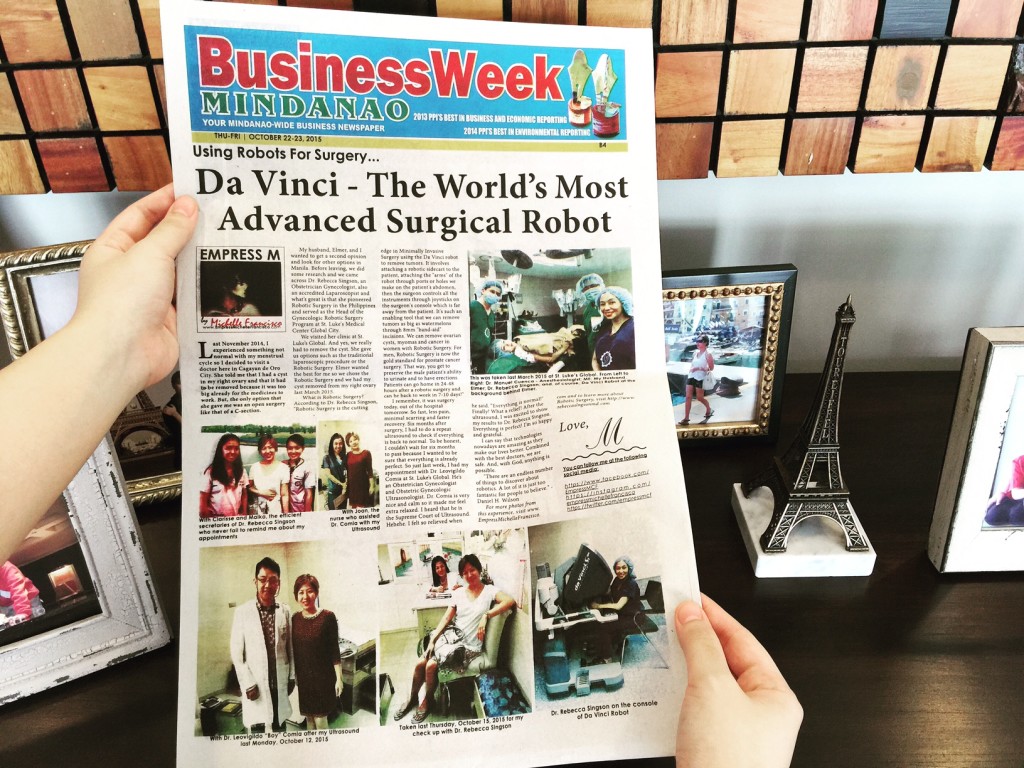
Hello my loves! =)
Sharing with you my story about my successful surgery using Da Vinci Robot at my article today at BusinessWeek Mindanao – LifeStyle section. Hope you learn something from it and to those who are going through something then this can be your best alternative.
Remember, health is wealth. Take care of your health. I learned it the hard way. Keep stress and negativity out of your life… Stay happy, laugh more and eat healthy (I’m still trying to perfect this). Hehehe.
Love this quote… “Disease cannot exist in a happy body” – The Secret
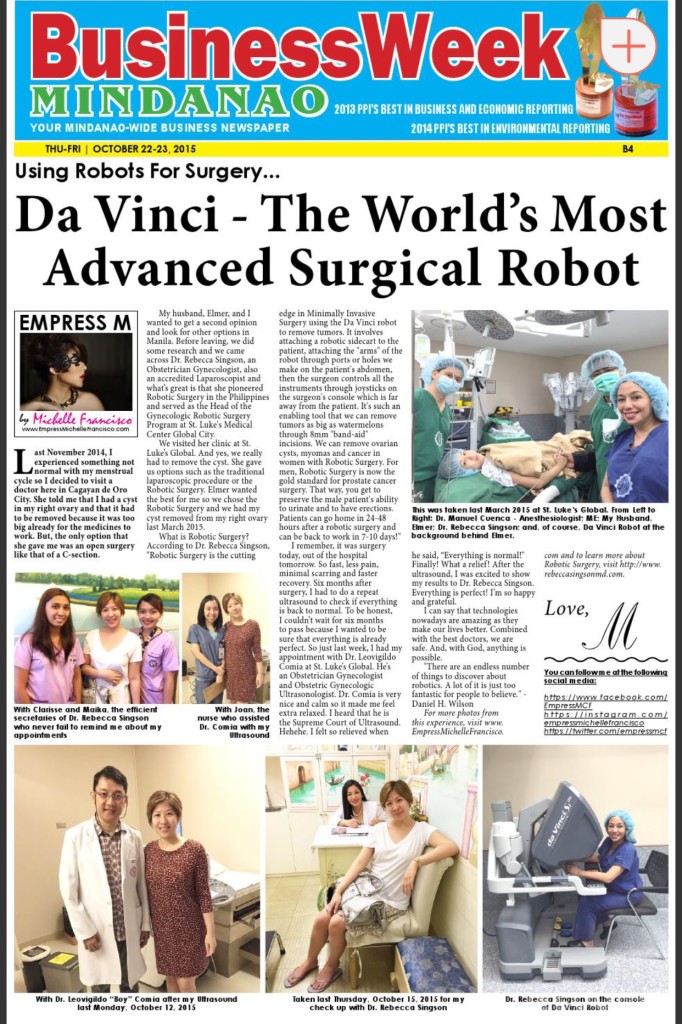
BusinessWeek Mindanao – LifeStyle Section by Empress M (October 22-23, 2015)
Using Robots For Surgery… Da Vinci – The World’s Most Advanced Surgical Robot
Last November 2014, I experienced something not normal with my menstrual cycle so I decided to visit a doctor here in Cagayan de Oro City. She told me that I had a cyst in my right ovary and that it had to be removed because it was too big already for the medicines to work. But, the only option that she gave me was an open surgery like that of a C-section.
My husband, Elmer, and I wanted to get a second opinion and look for other options in Manila. Before leaving, we did some research and we came across Dr. Rebecca Singson, an Obstetrician Gynecologist, also an accredited Laparoscopist and what’s great is that she pioneered Robotic Surgery in the Philippines and served as the Head of the Gynecologic Robotic Surgery Program at St. Luke’s Medical Center Global City.
We visited her clinic at St. Luke’s Global. And yes, we really had to remove the cyst. She gave us options such as the traditional laparoscopic procedure or the Robotic Surgery. Elmer wanted the best for me so we chose the Robotic Surgery and we had my cyst removed from my right ovary last March 2015.
What is Robotic Surgery? According to Dr. Rebecca Singson, “Robotic Surgery is the cutting edge in Minimally Invasive Surgery using the Da Vinci robot to remove tumors. It involves attaching a robotic sidecart to the patient, attaching the “arms” of the robot through ports or holes we make on the patient’s abdomen, then the surgeon controls all the instruments through joysticks on the surgeon’s console which is far away from the patient. It’s such an enabling tool that we can remove tumors as big as watermelons through 8mm “band-aid” incisions. We can remove ovarian cysts, myomas and cancer in women with Robotic Surgery. For men, Robotic Surgery is now the gold standard for prostate cancer surgery. That way, you get to preserve the male patient’s ability to urinate and to have erections. Patients can go home in 24-48 hours after a robotic surgery and can be back to work in 7-10 days!”
I remember, it was surgery today, out of the hospital tomorrow. So fast, less pain, minimal scarring and faster recovery. Six months after surgery, I had to do a repeat ultrasound to check if everything is back to normal. To be honest, I couldn’t wait for six months to pass because I wanted to be sure that everything is already perfect. So just last week, I had my appointment with Dr. Leovigildo Comia at St. Luke’s Global. He’s an Obstetrician Gynecologist and Obstetric Gynecologic Ultrasonologist. Dr. Comia is very nice and calm so it made me feel extra relaxed. I heard that he is the Supreme Court of Ultrasound. Hehehe. I felt so relieved when he said, “Everything is normal!” Finally! What a relief! After the ultrasound, I was excited to show my results to Dr. Rebecca Singson. Everything is perfect! I’m so happy
and grateful.
I can say that technologies nowadays are amazing as they make our lives better. Combined with the best doctors, we are safe. And, with God, anything is possible.
“There are an endless number of things to discover about robotics. A lot of it is just too fantastic for people to believe.” – Daniel H. Wilson
For more photos from this experience, visit www.EmpressMichelleFrancisco.com and to learn more about Robotic Surgery, visit https://rebeccasingsonmd.com.
Love,
M
You can follow me at the following social media:
https://www.facebook.com/EmpressMCF
https://instagram.com/empressmichellefrancisco
https://twitter.com/empressmcf
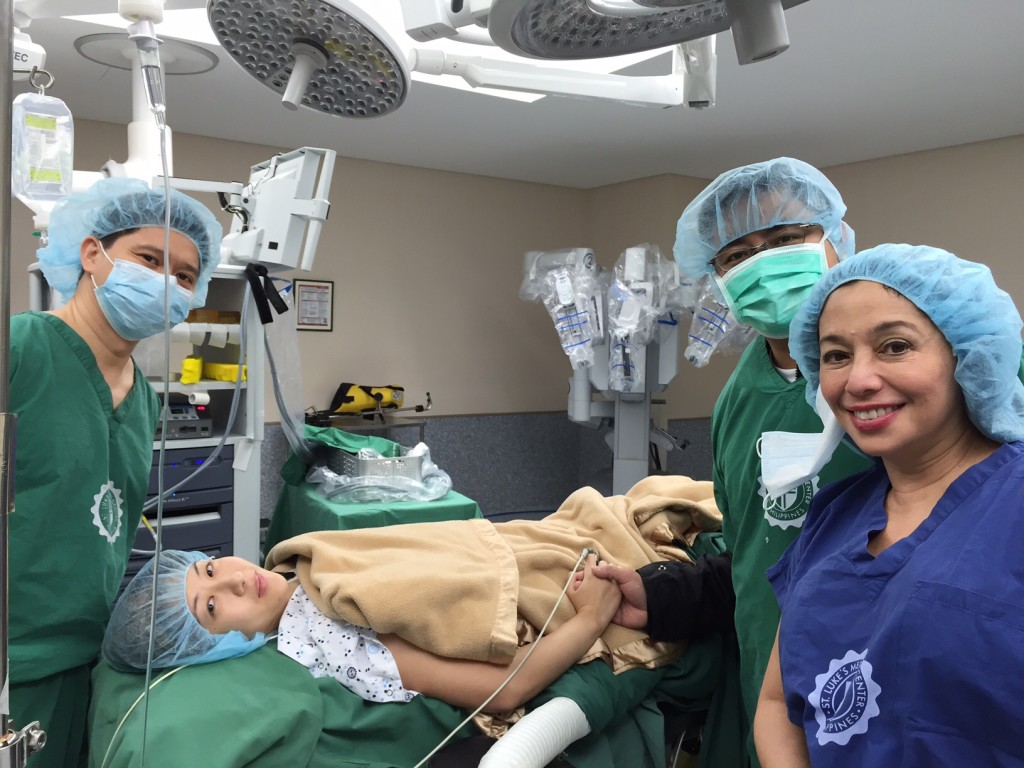
This was taken last March 2015 at St. Luke’s Global. From Left to Right: Dr. Manuel Cuenca – Anesthesiologist; ME; My Husband, Elmer; Dr. Rebecca Singson; and, of course, Da Vinci Robot at the background behind Elmer.
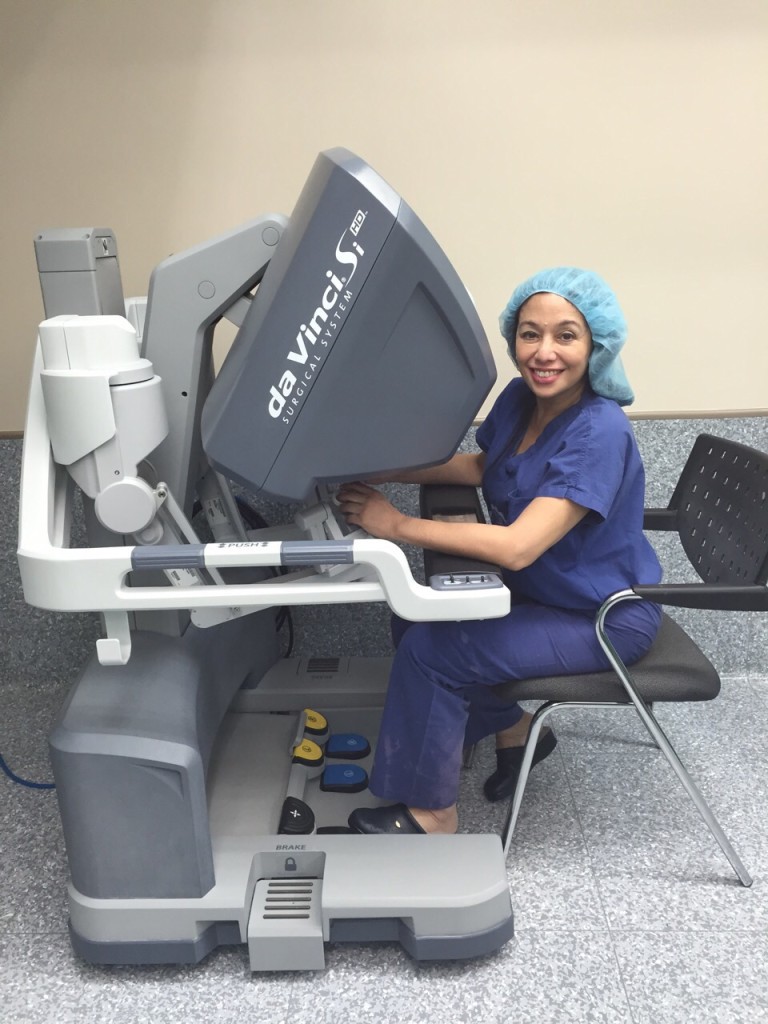
Dr. Rebecca Singson on the console of Da Vinci Robot
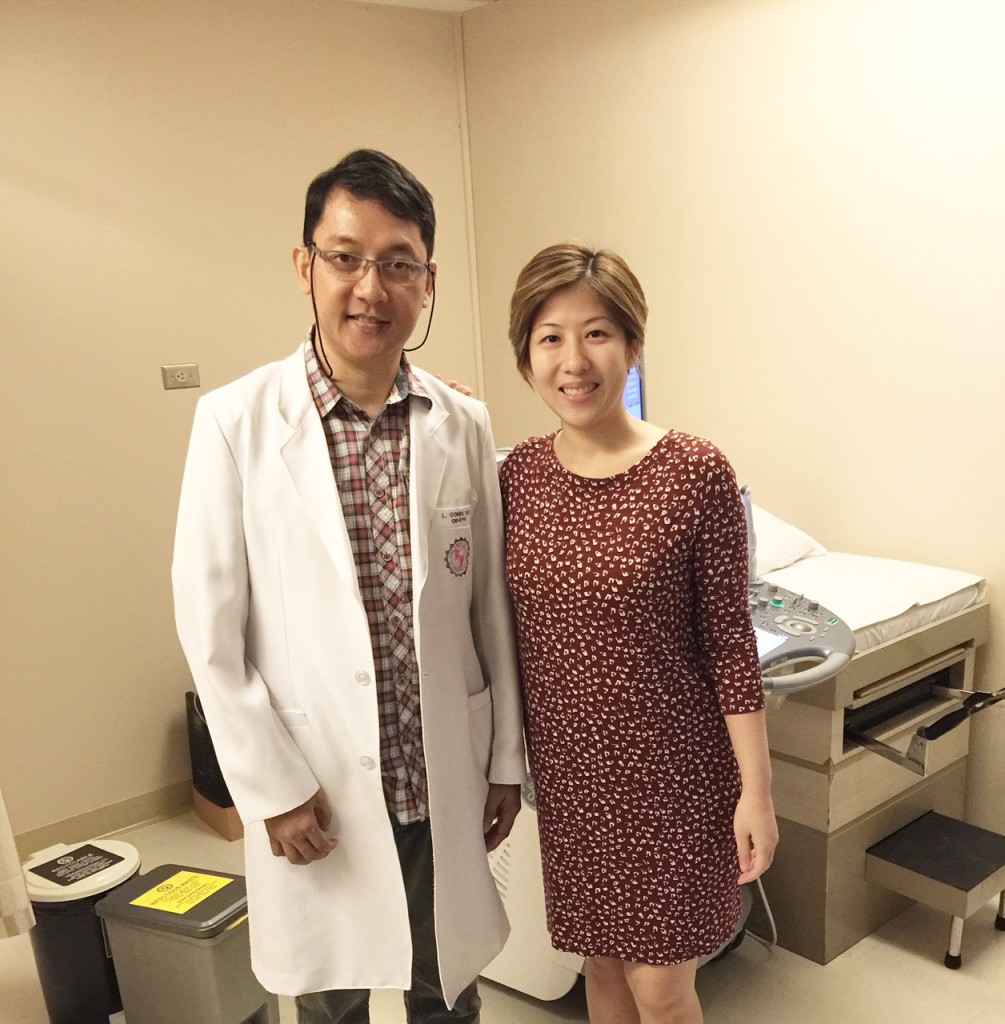
With Dr. Leovigildo “Boy” Comia after my Ultrasound last Monday, October 12, 2015
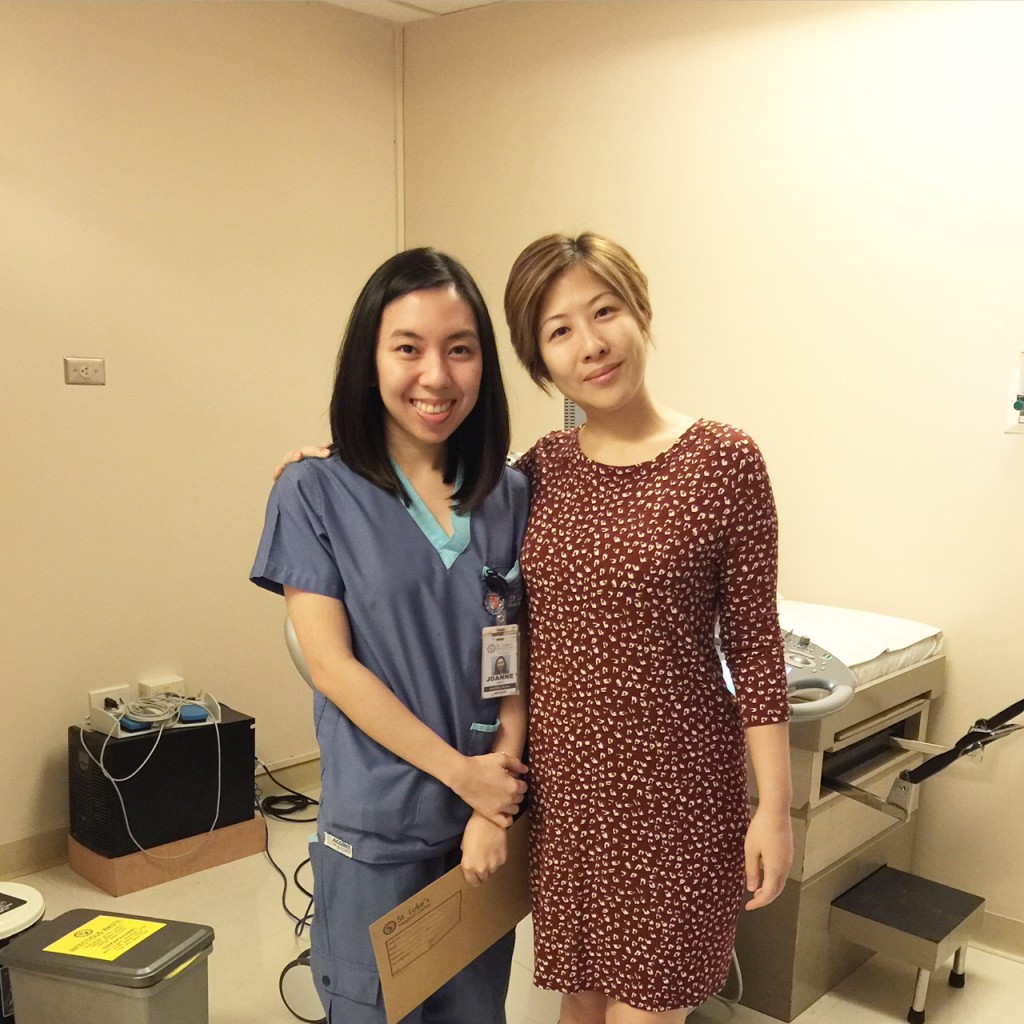
With Joan, the nurse who assisted Dr. Comia with my Ultrasound

Taken last Thursday, October 15, 2015 for my check up with Dr. Rebecca Singson
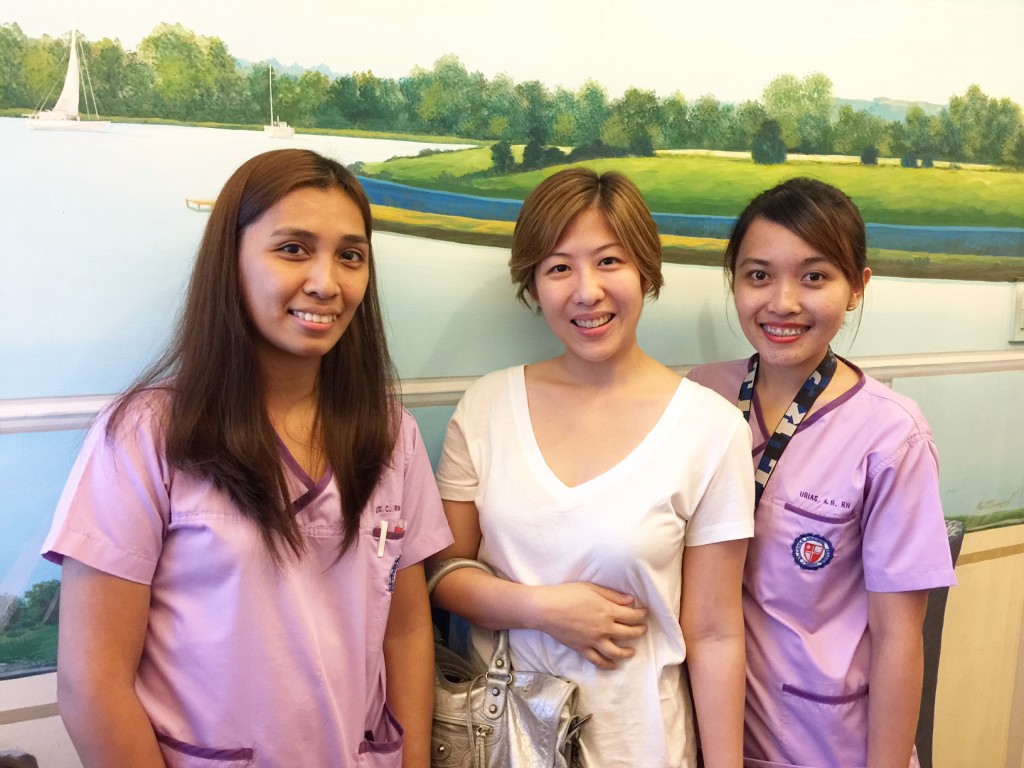
With Clarisse and Maika, the efficient secretaries of Dr. Rebecca Singson who never fail to remind me about my appointments
Article Source: www.empressmichellefrancisco.com
Da Vinci robot takes surgery to another cutting-edge level

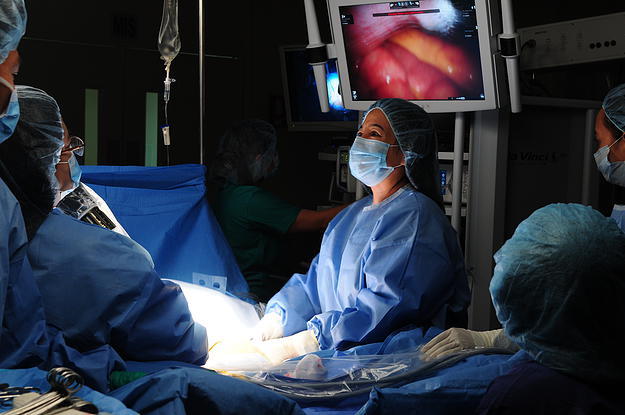
Minimally invasive surgery, in the form of laparoscopic surgery, was introduced in the country in 1993. This brought great strides in shifting major pelvic surgery from an open-incision approach to a band-aid-incision approach. The technology finally arrived where women did not have to suffer through huge, painful surgical incisions and could get back to work with very little time for recovery.
However, there were still limitations to laparoscopic surgery because of the nature of instrumentation. Although laparoscopic surgery utilized small incisions through which straight instruments that open and close to perform surgery, the surgeon had to remain standing beside patient to physically move instruments, causing surgeon fatigue during long, difficult procedures.
Furthermore, movements in laparoscopic surgery were counterintuitive to the human brain. This was because when an instrument is put inside the patient’s abdomen, for the tip of the instrument to go forward, one had to move the instrument backward, and to move the tip to the left, the surgeon had to move the handle to the right, all these while looking at a flat screen 2-D monitor that eliminated depth perception. This made it very difficult to teach the brain to adapt to this mirror-image movement, which explains the slow pace at which gynecologists embraced the technology in the country.
To date, there are only 126 gynecologic laparoscopists certified by the Philippine Society for Gynecologic Endoscopy out of about 3,500 certified OB-Gyn Fellows by the Philippine Obstetric and Gynecologic Society. Of the certified laparoscopists, only four have moved up to receive international accreditation in robotic surgery.
The advent of the Da Vinci Robot provided surgeons with a tool to carry out more complex, minimally invasive procedures. This was mainly because the robot had three main components, which took surgery to another cutting-edge level. The first component was the patient cart, which had four arms and were docked to the patient to hold the instruments through 0.8- to 1.2-cm incisions. The instruments had a revolutionary Endowrist technology which allowed rotation (laparoscopic instruments could only open and close), and had seven degrees of freedom of movements, surpassing the articulation of the human hand.
Second component is the Surgeon’s Console located away from the patient, which ergonomically seats the surgeon according to personal preference of elbow height, head angle and foot pedal adjustments. With joysticks, the surgeon can control instruments precisely inside the patient’s abdomen and perform surgery while robot software filters out any tremors from the surgeon’s hand.
Third component is the Vision System, which offers the surgeon a three-dimensional view of the surgical field while magnifying structures 10 to 15 times higher than the naked eye! This feature enables better precision in differentiating small nerves and vessels, which need to be avoided during dissection. The Robotic camera clearly offers a superior advantage from the limitation of laparoscopic camera that allows only a two-dimensional picture, thus disabling depth perception and magnifies view up to six times only to maintain focus.
There are nearly 3000 Da Vinci robots installed all over the world, two-thirds of which are located in the United States. Since 2001, when the US Food and Drug Administration (FDA) approved the use of the Da Vinci robot for prostatectomy (removal of the male prostate, usually for prostate cancer), there has been a rapid decline in open surgery for prostatectomy. This is because the magnification and precision of anatomic dissection with the robot allows the surgeon to isolate the nerves and vessels that preserve the erection and ability of the male patient to hold urine after surgery. Loss of erection and incontinence were feared major complications, which were common with open surgery prior to robotic technology. Currently, 87 percent of prostatectomies in the United States are done robotically. Robotic prostatectomy has indeed overtaken open surgery as the gold standard for the removal of prostate cancer.
In the field of gynecology, after the US FDA approval of Da Vinci robot for hysterectomy in 2005, there was surge of robotic hysterectomies such that to date, 76 percent of hysterectomies for cancer in the United States, are now done robotically because of improved patient outcomes. Open hysterectomy for benign or malignant reasons is resorted to only in 20-21 percent of cases.
At St Luke’s Global City Medical Center, to date, over 330 robotic surgery cases have been accomplished. Two-thirds of these cases were gynecologic. It is, in fact, the fastest-growing private gynecologic robotics program in Southeast Asia. Complication rates are extremely low and patient outcomes are very good.
Robotics technology is here to stay, and newer upgrades in the near future will only facilitate improved flexibility and reduced bulk of the machine, providing greater versatility and better access of the surgical field by the surgeon. What was once thought as science fiction is now available to Filipinos in a local setting and at a price lower than most countries all over the world where the robots are currently installed.
Rebecca B. Singson, MD, Fellow, POGS, ACS, AAGL, PSGE, PSCPC, is an internationally certified robotic surgeon. She practices robotic surgery at St. Luke’s Global Medical Center for symptoms related to the female reproductive organ. Her advocacy is to inform women that there’s a shorter time of recovery with robotic procedures.
Read more: http://business.inquirer.net/182041/da-vinci-robot-takes-surgery-to-another-cutting-edge-level#ixzz3K2Hd9FjA Follow us: @inquirerdotnet on Twitter | inquirerdotnet on Facebook
Robotic surgery, makabagong paraan para mas padaliin ang pago-opera

State of the Nation is a nightly newscast anchored by award-winning broadcast journalist, Jessica Soho. It airs Mondays to Fridays at 9:00 PM (PHL Time) on GMA News TV Channel 11. For more videos from State of the Nation, visit http://www.gmanetwork.com/stateofthen….
GMA News Online: http://www.gmanews.tv
Facebook: http://www.facebook.com/gmanews
Twitter: http://www.twitter.com/gmanews
Robotic Surgery: Changing the paradigms of traditional surgery

The introduction of minimally invasive surgery, in the form of laparoscopic surgery, was made available in the country in 1993. This brought great strides in shifting major pelvic surgery from an open incision approach to a band-aid incision approach. The technology finally arrived where women did not have to suffer through huge, painful surgical incisions and could get back to work with very little down time.
However, there were still limitations to laparoscopic surgery because of the nature of instrumentation. Although laparoscopic surgery utilized small incisions through which straight instruments, which open and close, to perform surgery, the surgeon had to remain standing beside patient to physically move instruments, promoting surgeon fatigue during long, difficult procedures.
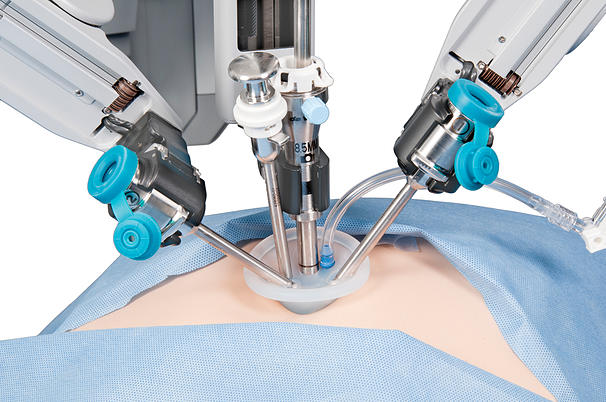
Furthermore, movements in laparoscopic surgery were counterintuitive to the human brain. This was because when an instrument is put inside patient’s abdomen, for the tip of the instrument to go forward, one had to move the instrument backward, and to move the tip to the left, the surgeon had to move the handle to the right, all these while looking at a flat screen 2-D monitor that eliminated depth perception. This made it very difficult to teach the brain to adapt to this mirror image movement, which explains the slow pace at which gynecologists embraced the technology in the country.
To date, there are only 126 certified gynecologic laparoscopists certified by the Philippine Society for Gynecologic Endoscopy out of about 3,500 certified OB-Gyn Fellows by the Philippine Obstetric and Gynecologic Society. Of the certified laparoscopists, only 4 have moved up to receive international accreditation in Robotic Surgery.
The advent of the Da Vinci Robot provided surgeons with an enabled tool to carry out more complex minimally invasive procedures. This was mainly because the robot had three main components, which took surgery to another cutting edge level. The first component was the patient cart, which had 4 arms, which were docked to the patient to hold the instruments through 0.8-1.2 cm incisions. The instruments had a revolutionary Endowrist technology which allowed rotation (laparoscopic instruments could only open and close), had 7 degrees of freedom of movements, surpassing the articulation of the human hand.
Second component is the Surgeon’s Console located away from patient, which ergonomically seats surgeon according to personal preference of elbow height, head angle, and foot pedal adjustments. With joysticks, surgeon can control instruments precisely inside patient’s abdomen and perform surgery while robot software filters out any tremors from surgeon’s hand.
Third component is the Vision System, which offers surgeon a 3-dimensional view of the surgical field while magnifying structures 10-15 times higher than the naked eye! This feature creates for better precision in differentiating small nerves and vessels, which need to be avoided during dissection. The Robotic camera clearly offers a superior advantage from the limitation of laparoscopic camera that allows only a 2-dimensional picture, thus, disabling depth perception and magnifies view up to 6 times only to maintain focus.
Since 2001, when the Food and Drug Administration (FDA approved the use of the Da Vinci robot for prostatectomies, there has been a rapid decline in open surgery for prostatectomy. This is because the magnification and precision of anatomic dissection with the robot allows the surgeon to isolate the nerves and vessels that preserve the erection and ability of the male patient to hold urine after surgery. Loss of erection and incontinence were feared major complications, which were common with open surgery prior to robotic technology. Currently, 87% of Prostatectomies in the USofA are done Robotically. Robotic Prostatectomy has indeed overtaken open surgery as the gold standard for removal of prostate cancer.
In the field of Gynecology, after the USofA FDA approval of Da Vinci robot pulled through for hysterectomy in 2005, there was surge of robotic hysterectomies such that to date, 76% of hysterectomies in the USofA done for cancer, are now done robotically because of improved patient outcomes. Open hysterectomy for benign or malignant reasons is resorted to only in 20-21% of cases.
At St. Luke’s Global City Medical Center, over 330 Robotic Surgery cases have been accomplished to date, 2/3 of which were gynecologic cases. It is, in fact, the fastest growing private Gynecologic Robotics program in Southeast Asia. Complication rates are extremely low and patient outcomes are very good.
Robotics technology is here to stay and newer upgrades in the near future will only facilitate improved flexibility and reduced bulk of the machine, providing greater versatility and better access of the surgical field by the surgeon. What was once thought as science fiction is now available to Filipinos in a local setting at a price lower than most countries all over the world where the robot is currently installed.
Rebecca B. Singson, MD, Fellow, POGS, ACS, AAGL, PSGE, PSCPC is an internationally certified Robotic Surgeon. She practices Robotic Surgery at St. Luke’s Global Medical Center for symptoms related to the female reproductive organ. Her advocacy is to inform inform women that there’s a shorter time of recovery with Robotic procedures. She can be reached at (0917) 800-3446 or 789-7700 local 305 or drop by Rm. 305, St. Luke’s Global City.
Lea Marcelo, 42 years old
It was April 24, 2013 when I had my Robotic Surgery due to an Ectopic Pregnancy in my Caesarean scar. This was found in my transvaginal ultrasound which was done twice to see the consistency of the results as advised by Dr. Rebecca Singson who has been my Obgyne since my last pregnancy in 2011. According to her this is such a very rare case and might lead to complications and if will not be removed immediately the embryo which was 8 weeks old may rupture anytime. She gave me two options for the type of surgery the laparatomy and the robotic. It was my first time to hear about the robotic surgery so my husband and I talked to her immensely and discussed its pros and cons.
She told us that it is less invasive, less painful and faster recovery after the procedure. But of course, more expensive, but we put into consideration that this procedure will be my fourth since I had two CS operations with my two kids and one Exploratory Laparatomy when I had ruptured appendix in 2005. My husband and I consulted other doctors and asked for second and third opinions but we finally made a decision and it was to undergo the Robotic surgery since I trusted Dr. Singson so well and I don’t think I cannot bear another open surgery since my last CS operation was only during September 2011.
After a day or two we finally set the schedule of the procedure. On the day of the procedure I was taken to the operating room at around 10 am the last words I heard from my anesthesiologist is to take a deep breath and the next thing I knew is that I was in the Recovery Room at around 3 pm.
Surprisingly, after the operation I was ask to take a pain reliever by mouth and I can already drink water. Compared to the Explore Lap it was only after two days that I can take liquids. The following day Dr. Singson visited me and told me how complicated it went because of the adhesions due to my previous operations but they never gave up and have done it successfully. She also told me that I can already go home that day since everything else was normal after the procedure. True enough, I can already start to walk the day right after the procedure and they already removed the catheter. The next morning we checked out of St Luke’s Medical Hospital, so it was only a day that I have stayed after the surgery. I was given prescription of 10 tablets of pain relievers but I have taken only two tablets since the pain was bearable when I was resting at home. After a week I was able to return to work as if I did not undergo a major operation.









